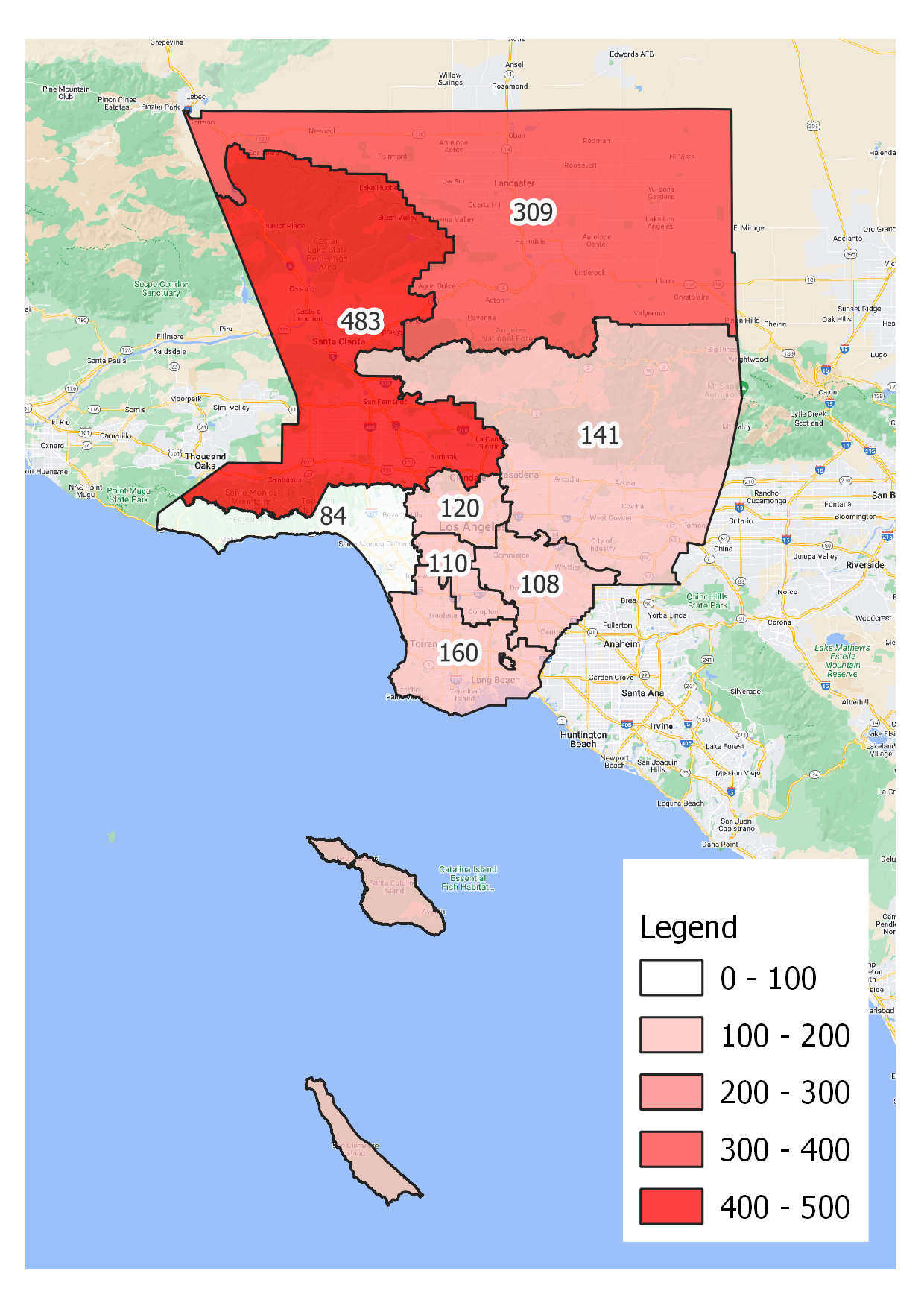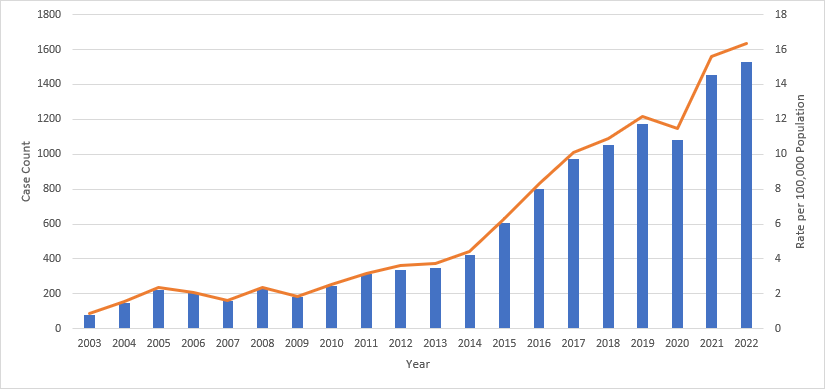
Residents can call 2-1-1 for help locating a health care
provider. Health care providers can call the Acute
Communicable Disease Control Program for more
information:
Past Event: Current Topics in Coccidioidomycosis
Presented by the Los Angeles County Departments of Public Health and Health Services and Kaiser Permanente Panorama City
Presentation Slides:
- Epidemiology of Cocci
- Diagnosis and Management of Cocci
- Modern Laboratory diagnosis of Cocci
- Cocci in the Immunocompromised Host
Recording:
WHAT IS VALLEY FEVER
Valley fever (also called coccidioidomycosis) is a disease caused by the Coccidioides fungus that grows in the soil and dirt in some areas of California and the southwestern United States. This fungus can infect the lungs and cause respiratory symptoms, including cough, difficulty breathing, fever, and tiredness or fatigue.
The fungal spores can get into the air when anything disturbs the soil, such as farming, construction, and wind. You can get Valley fever by breathing in dust from outdoor air that contains spores of the
Coccidioides
fungus.
Anyone who lives, works, or travels in an area where
the Valley fever fungus grows can breathe in these
fungus spores from outdoor dust and become infected.
Valley fever cannot spread from one person to
another. Many people who are infected do not have symptoms or have a mild respiratory illness.
But some people develop a severe illness such as pneumonia, meningitis, or dissemination when the fungus spreads to many parts of the body. Blacks, Latinos, Native Americans, Filipinos, males, pregnant women, the very young (<5 years), elderly, and
people who are immunocompromised are at high risk for severe disease. Because of the wide
range of clinical presentations, only the most severe cases are usually reported to the health department.
Valley fever is usually diagnosed with a blood test.
Most people (about 6 in 10) who are infected with Valley fever have no symptoms, and their bodies will fight off the infection naturally.
SYMPTOMS OF VALLEY FEVER
Common symptoms that may develop 1 to 3 weeks after breathing in the fungus include:

Fatigue

Cough

Difficulty Breathing

Fever

Night sweats

Muscle or joint pain
- Valley fever can affect people in different ways. Some people with Valley fever may only have mild symptoms that get better on their own in a few weeks. In others, symptoms like fatigue can take longer to go away and can last for several months.

Chest pain

Weight loss

Rash
- Valley fever can affect people in different ways. Some people with Valley fever may only have mild symptoms that get better on their own in a few weeks. In others, symptoms like fatigue can take longer to go away and can last for several months.
Current Situation in LA County
Number of Cases by Service Planning Area (SPA), 2022

Number of Cases and Incidence Rate per 100,000 Population by Year, 2003-2022

Resources for Providers
Health Education
- Valley Fever Coccidioidomycosis Frequently Asked Questions English | Spanish
- Valley Fever: What First Responders Need to Know English
- Valley Fever Youth Poster English | Spanish
- Valley Fever Youth Flyer English | Spanish
- Valley Fever Youth Presentation
- Valley Fever Youth Presentation: With sound and animation
- Valley Fever Stickers Order Form
- Valley Fever Bookmarkers Order Form
- Valley Fever Awareness in Antelope Valley Flyer English | Spanish
- Coccidioidomycosis (Valley Fever) in Animals in Los Angeles County
- Valley Fever in Pets FAQ English
- CDC: Coccidioidomycosis
- CDPH: Valley Fever
- What You Need to Know about Valley Fever in California (Brochure) English | Spanish | Tagalog
- Valley Fever Poster for the General Public English | Spanish
- Valley Fever Fact Sheet English | Spanish | Tagalog
- Valley Fever Fact Sheet for African Americans, Filipinos, & Hispanics English | Spanish | Tagalog
- Valley Fever Fact Sheet for Older Adults, Persons with Diabetes, & Persons with Weakened Immune Systems English | Spanish | Tagalog
Information for Outdoor Workers
- Valley Fever Management Plan: Guidelines for Employers
- CDPH Occupational Health Branch: Preventing Work-Related Valley Fever Website | Flyer
Publications
- Substantial Rise in Coccidioidomycosis in California: Recommendations for Healthcare Providers. CDPH Health Advisory. January 19, 2024.
- Anticipating a Rise in Coccidiodomycosis (Valley Fever) Cases. LAC DPH Rx for Prevention. September 2023.
- Potential Increased Risk for Valley Fever Expected. CDPH Press release August 1, 2023
- Coccidioidomycosis. LAC DPH Acute Communicable Disease Control Manual (B73)
- Coccidioidomycosis publication/reports archive
